CENTER OF TREATMENTS AND
PALIATIVE CARE
"Let God to your soul round trials.
Do not be mad at him, do not take on him as revenge on you."
Father John Jovan 1922 - 2008
THE CENTER OF TREATMENTS AND PALIATIVE CARE
We are a palliative and treatment clinic whose services provide an atmosphere of courage, silence, healing and an individual accompaniment. We focus on daily activities where physical and mental powers are affected by disease. A central aspect of the concept of holistic care is careful handling. Patients should feel welcome and accepted in their mental-spiritual dimension.
- Category: Paliative and treatments
- Duration: 00:59 Hours
- Address: Cluj-Napoca, România (Map)
Admission conditions
The appointment for hospitalization can be done at the headquarters of Center of Treatments and palliative care at 14 Hasdeu Street, or by phone 0264-123456.
Required documents for hospitalization at Treatments center and palliative care:
- ID card;
- ID card / bulletin copy - referral ticket from the family or specialist doctor;
- Recent medical papers - health card;
- coupon / employee certificate / proof of medical insurance Medical services provided by the Center of Treatments and palliative care are settled by the Health Insurance House.
It is very important for us a good partnership with the institutions that assign them, as well as with the doctors. We want to make this cooperation as easy as possible, this being the only way to ensure optimal patient care. In order to avoid stagnation of the patients it is good to use the introductory forms for internal medicine / oncology resp. Psychiatry / Psychosomatic. You can also use our online forms for outpatient examinations, specialist consultations and therapies.
"The suffering accompanying the disease leads, above all, to repentance, favors the feeling of evil and provokes a good mood for prayer in the soul. These latter effects prove to be fruitful because they are the essential engines of any spiritual life."
Jean-Claude Larchet
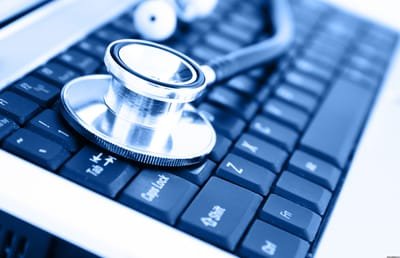

patients RIGHTS AND OBLIGATIONS
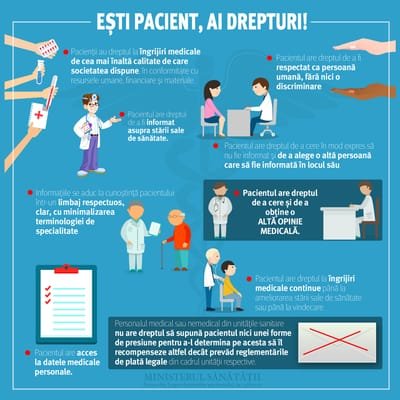
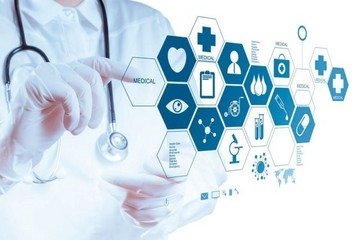
SELF DETERMINATION:
You decide after a detailed and easy-to-understand explanation, whether you want to follow a specific treatment or intervention. If you reject a proposed medical measure, it will, of course, be respected; however, you have to take responsibility for the resulting consequences.
INFORMATION:
The doctor will keep you informed in an easy-to-understand form about your health, about the expected healing process and about healing measures. Also ask the attending physician during the bedtime visits about the nature and purpose of the examinations, treatments or interventions. If you do not understand the terms or you do not need additional information, for example, ask your questions. Your doctor will also tell you about risks and side effects; offers you, if available, treatment alternatives. This information requirement is only void if immediate action is required. However, it will be done.
TREATMENT AND CARE:
You are entitled to treatment and careful care that respects human dignity and is appropriate to your illness. Medical records The patient file contains all the essential information and documents about illness, course and treatment. These include your personal information, the results of apparent examinations, laboratory reports, X-rays, surgical reports, and other exam results, as well as medical documentation. Upon request, you can inspect. Your patient's file will be managed electronically.
PRIVACY POLICY:
Clinical staff are required to keep secrets against unauthorized third parties. Third parties are, in principle, all persons who are not directly involved in their treatment. We follow federal and cantonal rules on data protection, as well as internal regulations on data protection and archiving. We are supported by the Data Protection Commission of the Center. Upon request, you will receive information about the storage, retention, and data transfer period. When transferring the data to the health insurance company, you have the right to request that your documents be sent only to the health insurer.
FAMILY AND FRIEND INFORMATION:
To protect your personal rights, your doctor may not provide complete information about your health without your consent to your family and friends. However, if the circumstances do not require a secret from you, consent to information for the caregivers (people called to the living will, your life partner or close relatives) is assumed. Please let us know explicitly if you do not want to. If you do not wish to be informed of any information regarding your stay, entry, departure or transfer, please inform reception.
INFORMATION ABOUT AWARENESS ACTIVITIES AND POST-CARE ACTIVITIES:
We draw attention to the fact that we provide medical information to physician assignment and treatment as well as other specialists who directly process treatment and care (eg Spitex, houses) without the statement of intent expressed otherwise.
USE OF DATA FOR RESEARCH:
Information in medical history can help you understand more about prevention successes and failures as well as the detection and treatment of diseases. Your patient record may then be scientifically evaluated by employees of the Center's research department. Further use and transmission of data to third parties takes place in each case in encrypted form and taking into account all valid data protection and research regulations. The data will be used only if you give your consent. The corresponding consent form contains additional information.
RIGHT TO REPLY:
If you feel injured in your rights, you can complain to the clinic staff. In the information folder you received at the entrance of the clinic, you will find more information on how to give your feedback.
OWN WILL:
With a living will, if you can not make a decision on your own, you can write your will. For example, if and what people should be included in medical decisions, whether lifestyle measures should be taken or omitted, and how you refer to autopsy and organ donation. Your willingness to do this must be respected by doctors, unless your orders violate the law or clues would suggest that you have since changed your mindset. The doctor will ask you about your living will.
PATIENT OBLIGATIONS:
As a patient, you also have certain responsibilities. These include, in particular, that: Provide full information on allergies, previous illnesses, examinations and treatments to the attending physician by adhering to the care and organization arrangements of the staff. Follow the instructions in the patient information, especially the rules on smoking, lighting the lights, operating mobile phones and leaving the clinical area, taking into account the needs of your colleagues to pay for the costs that are not covered by your health insurance.
LEGISLATION AND REGULATIONS
Legea nr. 95/2006 privind reforma în domeniul sănătăţii,
Legea nr. 46/2003 privind drepturile pacienţilor şi
Ordinul Ministrului Sănătăţii nr. 386/2004 privind aprobarea
Normelor de aplicare a Legii drepturilor pacientului nr. 46/2003
(1). Drepturile şi obligaţiile pacienţilor sunt prevăzute în Legea nr. 95/2006 privind reforma în domeniul sănătăţii, Legea nr. 46/2003 privind drepturile pacienţilor şi Ordinul Ministrului Sănătăţii nr. 386/2004 privind aprobarea Normelor de aplicare a Legii drepturilor pacientului nr. 46/2003.
(2). Pacientii au dreptul la îngrijiri medicale de cea mai înaltă calitate de care societatea dispune, în conformitate cu resursele umane, financiare si materiale.
(3). Pacientul are dreptul de a fi respectat ca persoană umană, fără nici o discriminare.
(4). Pacientul are dreptul de a fi informat cu privire la serviciile medicale disponibile, precum si la modul de a le utiliza.
(5). Pacientul are dreptul de a fi informat asupra identitătii si statutului profesional al furnizorilor de servicii de sănătate.
(6) Pacientul internat are dreptul de a fi informat asupra regulilor si obiceiurilor pe care trebuie să le respecte pe durata spitalizării.
(7). Pacientul are dreptul de a fi informat asupra stării sale de sănătate, a interventiilor medicale propuse, a riscurilor potentiale ale fiecărei proceduri, a alternativelor existente la procedurile propuse, inclusiv asupra neefectuării tratamentului si nerespectării recomandărilor medicale, precum si cu privire la date despre diagnostic si prognostic.
(8). Pacientul are dreptul de a decide dacă mai doreste să fie informat în cazul în care informatiile prezentate de către medic i-ar cauza suferintă.
(9). Informatiile se aduc la cunostintă pacientului într-un limbaj respectuos, clar, cu minimalizarea terminologiei de specialitate; în cazul în care pacientul nu cunoaste limba română, informatiile i se aduc la cunostintă în limba maternă ori în limba pe care o cunoaste sau, după caz, se va căuta o altă formă de comunicare.
(10). Pacientul are dreptul de a cere în mod expres să nu fie informat si de a alege o altă persoană care să fie informată în locul său.
(11). Rudele si prietenii pacientului pot fi informati despre evolutia investigatiilor, diagnostic si tratament, cu acordul pacientului.
(12). Pacientul are dreptul de a cere si de a obtine o altă opinie medicală.
(13). Pacientul are dreptul să solicite si să primească, la externare, un rezumat scris al investigatiilor, diagnosticului, tratamentului si îngrijirilor acordate pe perioada spitalizării.
(14). Pacientul are dreptul să refuze sau să oprească o interventie medicală asumându-si, în scris, răspunderea pentru decizia sa; consecintele refuzului sau ale opririi actelor medicale trebuie explicate pacientului.
(15). Când pacientul nu îsi poate exprima vointa, dar este necesară o interventie medicală de urgentă, personalul medical are dreptul să deducă acordul pacientului dintr-o exprimare anterioară a vointei acestuia.
(16). În cazul în care pacientul necesită o interventie medicală de urgentă, consimtământul reprezentantului legal nu mai este necesar.
(17). În cazul în care se cere consimtământul reprezentantului legal, pacientul trebuie să fie implicat în procesul de luare a deciziei atât cât permite capacitatea lui de întelegere.
(18). În cazul în care furnizorii de servicii medicale consideră că interventia este în interesul pacientului, iar reprezentantul legal refuză să îsi dea consimtământul, decizia este declinată unei comisii de arbitraj de specialitate.
(19). Comisia de arbitraj este constituită din 3 medici pentru pacientii internati în spitale si din 2 medici pentru pacientii din ambulator.
(20). Consimtământul pacientului este obligatoriu pentru recoltarea, păstrarea, folosirea tuturor produselor biologice prelevate din corpul său, în vederea stabilirii diagnosticului sau a tratamentului cu care acesta este de acord.
(21). Consimtământul pacientului este obligatoriu în cazul participării sale în învătământul medical clinic si la cercetarea stiintifică. Nu pot fi folosite pentru cercetare stiintifică persoanele care nu sunt capabile să îsi exprime vointa, cu exceptia obtinerii consimtământului de la reprezentantul legal si dacă cercetarea este făcută si în interesul pacientului.
(22). Pacientul nu poate fi fotografiat sau filmat într-o unitate medicală fără consimtământul său, cu exceptia cazurilor în care imaginile sunt necesare diagnosticului sau tratamentului si evitării suspectării unei culpe medicale.
(23). Toate informatiile privind starea pacientului, rezultatele investigatiilor, diagnosticul, prognosticul, tratamentul, datele personale sunt confidentiale chiar si după decesul acestuia.
(24). Informatiile cu caracter confidential pot fi furnizate numai în cazul în care pacientul îsi dă consimtământul explicit sau dacă legea o cere în mod expres.
(25). În cazul în care informatiile sunt necesare altor furnizori de servicii medicale acreditati, implicati în tratamentul pacientului, acordarea consimtământului nu mai este obligatorie.
(26). Pacientul are acces la datele medicale personale.
(27). Orice amestec în viata privată, familială a pacientului este interzis, cu exceptia cazurilor în care această imixtiune influentează pozitiv diagnosticul, tratamentul ori îngrijirile acordate si numai cu consimtământul pacientului.
(28). Sunt considerate exceptii cazurile în care pacientul reprezintă pericol pentru sine sau pentru sănătatea publică.
(29). În cazul în care furnizorii sunt obligati să recurgă la selectarea pacientilor pentru anumite tipuri de tratament care sunt disponibile în număr limitat, selectarea se face numai pe baza criteriilor medicale.
(30). Interventiile medicale asupra pacientului se pot efectua numai dacă există conditiile de dotare necesare si personal acreditat.
(31). Se exceptează de la prevederile alin. (30) cazurile de urgentă apărute în situatii extreme.
(32). Pacientul are dreptul la îngrijiri terminale pentru a putea muri în demnitate.
(33). Pacientul poate beneficia de sprijinul familiei, al prietenilor, de suport spiritual, material si de sfaturi pe tot parcursul îngrijirilor medicale. La solicitarea pacientului, în măsura posibilitătilor, mediul de îngrijire si tratament va fi creat cât mai aproape de cel familial.
(34). Pacientul internat are dreptul si la servicii medicale acordate de către un medic acreditat din afara clinicii.
(35). Personalul medical sau nemedical din unitătile sanitare nu are dreptul să supună pacientul nici unei forme de presiune pentru a-l determina pe acesta să îl recompenseze altfel decât prevăd reglementările de plată legale din cadrul unitătii respective.
(36). Pacientul poate oferi angajatilor sau unitătii unde a fost îngrijit plăti suplimentare sau donatii, cu respectarea legii.
(37). Pacientul are dreptul la îngrijiri medicale continue până la ameliorarea stării sale de sănătate sau până la vindecare.
(38). Continuitatea îngrijirilor se asigură prin colaborarea si parteneriatul dintre diferitele unităti medicale publice si nepublice, spitalicesti si ambulatorii, de specialitate sau de medicină generală, oferite de medici, cadre medii sau de alt personal calificat. După externare pacientii au dreptul la serviciile comunitare disponibile.
(39). Pacientul are dreptul să beneficieze de asistentă medicală de urgentă, de asistentă stomatologică de urgentă si de servicii farmaceutice, în program continuu.
CHAPTER XII: INTERNAL ORDER REGULATIONS FOR PATIENTS
Art. 68
(1) Pacientilor internaţi li se aduc la cunoştinţă, la internare, prevederile Regulamentului de ordine interioară care-i privesc şi vor semna de luare la cunoştinţă despre acestea în foaia de observaţie clinică generală.
(2) Regulamentul de ordine interioară al pacientilor cuprinde obligaţiile şi drepturile acestora pe perioada internării.
(3) Principalele obligatii ale pacientilor, pe timpul internării în institut, sunt:
- Prezentarea tuturor actele necesare la internare.
- Informarea medicului / asistentei de salon în legătură cu orice modificare apărută în evoluţia stării de sănătate.
- Respectarea conduitei terapeutice (cooperarea la tratament, intervenţie chirurgicală, etc). (Procurarea de medicamente din afara clinicii nu este permisă decât cu avizul medicului. Se interzice cu desăvârşire înstrăinarea medicamentelor prescrise în spital.)
- Respectarea integrităţii bunurilor din patrimoniul institutiei, a inventarului ce se predă bolnavului la internare şi folosirea cu grijă si corectă a instalaţiilor sanitare la dispozitie.
- Continuarea efectuării tratamentului la domiciliu (după externare), conform recomandării medicului curant.
- Să respecte personalul (ne)medical din institutie.
- Să prezinte medicului de familie biletul de ieşire din spital şi scrisoarea medicală primite la externare.
- Să predea fără întârziere hainele şi încălţămintea la garderobă.
- Să respecte regulile de ordine interioară ale unitatii afişate la locuri vizibile.
- Să ia la cunoştinţă, la internare, de prevederile Regulamentul de ordine interioară al pacientilor, cât şi de tratamentul medico-chirurgical, şi să semneze pe foaia de observaţie clinică, în caz contrar asumându-si consecinţele.
(5) În spital sunt interzise cu desăvârşire: fumatul, consumul de băuturi alcoolice, jocurile de noroc.
(6) Repausul la pat pe durata indicată de medicul curant este obligatorie. Deplasările pentru investigaţii şi tratamente se vor face numai la indicaţia medicului curant.
(7) Se recomandă evitarea consumării alimentelor conservate şi a celor contraindicate de medici.
(8) Pacientii au obligaţia de a avea o comportare corectă în relaţiile cu ceilalţi bolnavi şi cu personalul medico-sanitar, evitând încălcarea disciplinei de spital, tulburarea liniştii şi orice manifestare necuviincioasă sau neadecvată. Nemulţumirile vor fi aduse la cunoştiiţă pe un ton adecvat si imediat ce este posibil medicului curant sau medicului şef de secţie, care sunt obligaţi să asculte şi să rezolve orice plângere.
(9) Pacientii sunt obligaţi să păstreze curăţenia saloanelor, culoarelor şi grupurilor sanitare şi să ajute la menţinerea curăţeniei în unitate.
(10) Este cu desăvârşire interzisă părăsirea clinicii fără bilet de voie semnat de medicul curant şi aprobat de medicul şef de secţie sau inlocuitorul său.
(11) În mod cu totul excepţional (calamităţi, chemări ale comisiei de expertiză, probleme familiare sau probleme personale urgente), precum şi cu ocazia zilelor festive, se pot acorda invoiri de câteva zile, la propunerea medicului curant si cu aprobarea medicului şef de secţie.
(12) Pacienţii şi aparţinătorii nu vor avea acces în zonele special restricţionate : staţia de sterilizare, blocul operator (pentru aparţinători), laborator, farmacie, bucătărie dietetică sau bucătăria centrală, depozitele de alimente şi staţiile de butelii de gaze medicale sau în locurile marcate cu “Acces interzis”.
(12) În situaţia în care aparţinătorii sau pacienţii nu respectă obligaţiile ce le revin acest lucru este adus la cunoştinţa medicului curant sau medicului de gardă care – fără a pune în pericol sănătatea pacientului poate decide externarea bonavului. Excepţie fac urgenţele majore în care pacientul va fi menţinut în spital iar situaţia va fi adusă la cunoştinţa şefului de secţie şi – după caz – a Conducerii clinicii. În cazuri extreme de indisciplină a celor internaţi sau aparţinătorilor se va anunţa Poliţia.
Art. 69
(1) Programul de vizită a altor persoane decât persoana internată se va afisa la nivelul sectiei.
(2) Şeful secţiei poate permite vizitarea pacientilor în afara programului stabilit numai în cazuri cu totul speciale (pacienti în stare gravă, imobilizaţi etc.) eliberând în acest scop un permis de intrare, în care vor fi specificate orele şi zilele în care este admisă vizita.
(3) Medicul de gardă, pentru situaţii deosebite, poate aproba vizitarea unor pacienti din secţiile pe care le asigură răspunzând de modul cum a organizat desfăşurarea vizitei. Vizitarea este permisă pentru cel mult trei vizitatori, pentru o durată de timp ce nu va depăşi o jumătate de oră.
SERVICES
-emergency
-alternative medicine
-internal medicine
-oncology
-psychiatry
gastroenterology
-cardiology
-neurology
-pulmonology
-gynecology
-Family medicine
pathiatry and medicine for young people
-diagnostics and treatment;
- outpatient treatment and information
THERAPIES FOR ADULTS
Biography and psycho-oncology care
Creative workshops and self-discovery
Painting and design therapy
Music therapy
Physical therapy
Therapeutic speech design
Care, advice, accompaniment
Alternative cancer treatment
Care Management and Social Services life care
SPECIAL TREATMENTS AND SERVICES
Wrapping, heating and relaxation.
Rhythms written by therapists, designed to help people with fatigue, sleep disturbance, restlessness, anxiety, in order to relieve pain and relax in the recovery process. Oil, emulsions or a rhythmic ointment on the skin are applied. These may be for example on the legs, on the back / neck or the entire body Massage the legs with lavender oil for the night as sleep aid Leaking feet with an emulsion that strengthens connective tissue in varicose veins and to prevent venous thrombosis Massaging the foot with copper ointment on cold cold feet. Frequency with St. John's wort emulsion for depressive states and nervous tension. Massaging the abdomen with cucumber oil for digestive problems
Learn MorePackages and compresses
Suitable to support the body and complaints. With compressions and wrapping, an organ or a region of the body is treated and can have a whole body strengthening impact and a prolonged local effect beyond time. Typically, packs are made with plant extracts, such as ointments, oils or tea. They supplement analgesics and in individual cases can reduce or even replace painkillers.
Learn MoreSubstances and applications
Yeast infusions such as, for example, the queen of the mite to stimulate anabolic activity in the liver, general fatigue or depression, support for detoxification of the body after a stress therapy, such as for example citosis or antibiotic therapy
Learn MoreEssences (plant extracts)
Arnica used in inflamed and painful joints (arthritis or rheumatism)
Oils
Oil covers on the back, neck or shoulder against muscle tension. Such as: chronic pain, nerve pain (neuralgia) or disc movement (hernia)
Patient coverage with ointment
Patient coverage with ointment on the stomach in exhausted and weakened patients, digestive disorders: spastic, intestinal disturbances in vegetative disorders. Another example: The lavender ointment placed in the heart's area is used to calm and harmonize the interior in case of fears, worries and depressing thoughts, especially during the night.
For the treatment of a subsequent heart attack and cases of bronchitis
For the treatment of a subsequent heart attack, fresh plants are used, for example: compressions on the forehead, sinus or throat, especially chronic sinusitis (sinusitis), headaches, or migraine onset. An example Quark: packs or compresses with Quark for joint blockages, lymphatic or pleural congestion in pneumonia. Beeswax: bronchitis in case of bronchitis with painful and dry cough.
Bath
Partial baths in the tub - baths on legs, arms or in the chair with crushing and relaxing preparations. For baths in a bathtub full of hot water to which one or more substances are added. As a result, water can increase vitality - have similar effects to self-cleaning and regeneration. As substances, home-made toiletries such as rosemary, lavender and lemon are used, especially in foot baths.
Substances and application
Baths with mustard flour, especially on the onset of a cold, on the occurrence of migraines, morning depression, in depressed or restless patients and anxious Bathroom with lemon salt in case of cold, headaches Some teas for certain heart disease Bath with chamomile in case of inflammation
THERAPIES FOR CHILDRENS AND YOUNG ADULTS
Psychological discussions and acceptance
Coordination and control in the fight against the disease, in accepting hospitalization, in compliance with treatment
Pain management and techniques to reduce anxiety over medical procedures
Socialization, workshops and interactive activities with volunteers and people who have gone through difficult situations
In-door and out-door activities (social games)
Art therapy, dramatherapy and emotional therapy
Practical workshops and learning of new skills specific to certain professions
Techniques to learn to maintain a healthy lifestyle and ensure child reintegration in school and society in general
PHARMACY



Medicines and preparations are made in the laboratories of our centers or other suppliers with whom we collaborate; In addition to classical treatment, we offer natural remedies and treatments adapted to the various conditions and problems that may occur during specific treatments or procedures. Many of these products are handmade and are made from carefully selected plants. much of the amount of herb used is from the clinic's garden, which is a huge asset. Manufacturing processes maintain or improve the healing properties of the natural substances underlying the remedies. The doctor may also receive special recipes for his patient sooner. The Remediation Laboratory meets the requirements of drug control. Also in our laboratories we prepare personal care and beauty care products. We also offer packages or offers of gifts and special care that patients, guests or visitors can buy.
USEFUL INFORMATION
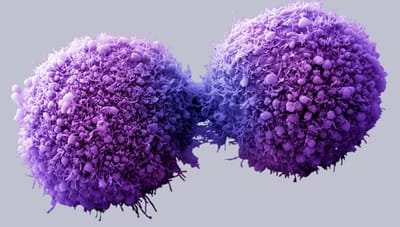
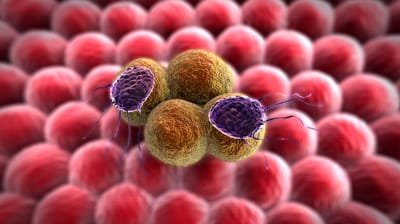
Normally, the cells in our body develop and divide by a controlled and controlled mechanism when the cells reach maturity or are no longer functional, die, and are replaced by new, young and healthy cells. When the genetic material of a cell undergoes mutations, development and multiplication will be affected. "Old" cells, instead of dying, develop chaotically and form other new abnormal cells. In turn, new cancer cells will develop and multiply uncontrollably. Cancer cells "assault" healthy cells in the body, spreading to other areas of the body.
When cancer cells migrate from the body where they have appeared (eg liver), through blood or lymph, to other areas or organs, metastasis is spoken. In short, a cancerous cell differs from a normal one through chaotic development and property to invade other tissues than the one it belongs to. Mostly, the cluster of cancer mutant cells will form a tumor, which may be benign (noncancerous) or malignant (cancerous).
Until now, the causes that lead to cancer are unknown, but there are supposed to be cumulative factors that favor the development of cancer cells. We can talk about age, genetic inheritance, but also possible environmental factors such as toxins or environmental pollution. It is supposed to be a reason for lifestyle, as well as some habits or addictions such as smoking, alcohol consumption, foods with a certain caloric content or sedentary, but also a long exposure to solar radiation. In the development of some forms of cancer, it is believed that infections with the hepatitis B or C virus, as well as that with the Human Papilloma Virus (HPV) may contribute to a certain extent to the evolution of some diseases. As the estimates show, 1 out of 3 people will develop a form of cancer over the course of their life, which makes us believe that it is a fact that we must get used to and accept as such.
"Behind every illness there is a pain of the soul [...] It all starts with worries [...]
The disease begins in the mind, as a negative thought, through constant unrest."
Mother Gavrilia Papaiannis
1897-1992
THE MOST KNOWN FORMS OF CANCER
The prostate adenoma
Hepatic adenoma
The pituitary adenoma
Ameloblastomul
astrocytoma
Gestational trophoblastic disease
Non-melanoma skin cancer
Cancer oral cans
Tonsil cancer
Anal cancer
Cervical cancer
Colon cancer
Endometrial cancer (uterine)
Small intestinal cancer
Laryngeal cancer
Skin cancer (melanoma)
Prostate cancer
Breast cancer (breast)
Bladder cancer
Cancer of the bile duct (Colangiocarcinoma)
Esophageal cancer
Gastric (stomach) cancer
Cancer of salivary glands
Adrenal gland cancer (adrenal carcinoma)
Hepatic (liver)
Hepatic cancer - Hepatocarcinoma
Hepatic cancer: Hepatoblastoma
Labial Cancer (Lips)
Cancer of the tongue
Breast cancer in man
Nasal cancer
Bone cancer
Cancer of the endocrine pancreas: Insulinoma
Cancer of endocrine pancreas: Somatostatinoma
Cancer of the endocrine pancreas: Vipoma (WDHA syndrome)
Pancreatic Cancer (Pancreas)
Primal peritoneal cancer
Pleural cancer
Lung Cancer (Lung Bronch, Lung)
Rectal cancer
Kidney (kidney)
Testicular cancer
Thyroid cancer (thyroid)
Cancer of the fallopian tubes
Vaginal cancer
Bladder cancer
The vulvar cancer
The intestinal carcinoid
The lung carcinoid
Cystic adenoid carcinoma
Cellular basal cell carcinoma
Squamous cell carcinoma
Merkel cell carcinoma
chondrosarcoma
craniopharyngioma
Fibroadenoma breast
fibrosarcoma
glioblastoma
Hepatic hemangioma
leiomyosarcoma
leukemia
Acute lymphocytic leukemia
Chronic lymphocytic leukemia
Acute myeloid leukemia
Chronic myeloid leukemia
Cutaneous lymphoma
Gastric lymphoma
Hodgkin's lymphoma
Non-Hodgkin's lymphoma
Thyroid lymphoma
liposarcoma
Fibrochistic mastitis
medulloblastoma
Cerebral meningioma
Myelodysplasia (Myelodysplastic Syndrome - SMD)
Multiple myeloma
Nefroblastoma (Tumora Wilms)
Multiple Endocrine Neoplasia Type 1 - NEM 1 (Wermer Syndrome)
Multiple endocrine neoplasia type 2 - NEM 2
Neuroblastoma in the baby
Breast nodules
osteosarcoma
rhabdomyosarcoma
retinoblastoma
Sarcom Ewing
Sarcom Kaposi
Uterine sarcoma
teratoma
Tumor Askin
The Pancoast Tumor
Tumora phyllodes
Benign tumors of the larynx
Thyroid malignant tumors (neoplasms)
Tumors of the appendix
Brain tumors
Cavity tumors
Benign esophageal tumors
Tumors of the optic nerve
Orbiting tumors
Ovarian tumors
Tumors of the parotide
Penny tumors
Pituitary tumors
Pulmonary tumors
Tumors of sclera
Gastrointestinal stromal tumors (GIST)
Thymus tumors
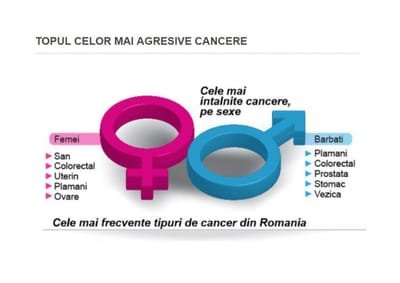
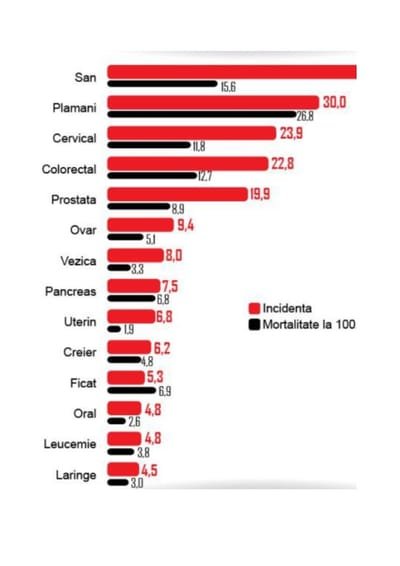
TERMS USED


Adenocarcinoma: Cancerous malignant tumor that is formed in the glandular tissue. Glandular cells are found in the layer that lining some internal organs, secreting various substances (mucus, digestive juice, etc.). Examples of adenocarcinoma cancers: lung, colon, pancreas, breast, etc.
Adenoma: A benign tumor on the glands with a similar structure.
Anatomopathologist (here): Specialist who offers the diagnosis of certainty of cancer. Specialist in the diagnosis and classification of diseases, based on the organic changes occurring in the tissues and cells, revealed in the laboratory analyzes.
Antiemetics: Medicines, substances that prevent and relieve nausea and vomiting caused by treatment.
Benign Necanceros. A benign tumor does not spread to other tissues or regions of the body, and can often be treated successfully by surgical removal.
Biopsy: The harvesting of cells or fragments from the affected organ or tissue by the anatomopathologist to provide the diagnosis of certainty. The harvested sample is examined under laboratory conditions, analyzing the benign or malignant nature of the suspected tumor or tissue.
Brachytherapy: Internal Radiotherapy; a form of cancer treatment that involves the placement of a radioactive source in the body in the immediate vicinity of the tumor (intracavitary brachytherapy) or even inside it (interstitial brachytherapy).
Localized cancer: Stage I, which is found only at the level of the tissue or organ in which it started and did not spread to other areas of the body. Similar "in situ".
Systemic cancer ≠ localized cancer. Cancer that the city has stashed - has spread to other organs and structures of the body to where it debuted.
Carcinogen: A chemical substance, a virus or a physical substance that causes or favors the development of cancer, or which maintains its development. One of the most known carcinogens is tobacco.
Carcinoma: The most common type of cancer; a malignant formation that occurs in the epithelial cells that form what the organs cover.
Chemotherapy: Drug treatment for cancer, which aims to stop cancer cells from developing; is one of the most used anticancer therapies, sometimes in combination with other forms of treatment (radiotherapy, surgery).
Chist: Liquid, air, pus or other organic material-like bag formations. Most often, cysts are benign (non-cancerous).
Diagnosis of certainty: The diagnosis required for the initiation of anticancer treatment, which confirms or invalidates the benign or malignant nature of the tumor; is performed by the anatomopathologist, through surgery or biopsy.
Dysplasia: Abnormal changes and development of the cells and tissues in the body that could indicate an early stage of cancer.
Multidisciplinary team: Each case of cancer is managed by a group of specialists, including: oncologist, oncologist surgeon specializing in a particular region of the body, radiotherapist, anatomopathologist. Where appropriate, the multidisciplinary team may include other specialists who work together to establish a viable treatment plan for each patient.
Electrochemistry: Cancer treatment combining chemotherapy with electrical impulses.
Enucleation: A method of surgically removing an encapsulated tumor (inside an organ) without a cut, but by compression, just like removing a kernel.Excision: Surgical removal of an organ or tumor.
Expectant vigilance: Careful monitoring of cancer by a specialist before or after treatment, in order to observe the overall evolution of patient health and disease in particular.
Negative False: Result of a medical investigation that indicates a normal value, although there is an anomaly.
Positive False: Result of a medical investigation that indicates a health problem, when it does not actually exist.
Fibroadenoma: A benign (noncancerous) mammary tumor of fibrous or glandular nature.
Cancer-susceptible gene: Gene whose mutations involve a risk of developing a certain type of cancer, higher than the average risk of the population.
Excision: Surgical removal of an organ or tumor.
Expectant vigilance: Careful monitoring of cancer by a specialist before or after treatment, in order to observe the overall evolution of patient health and disease in particular.
Hyperplasia: Unusual multiplication of the number of normal cells in a tissue or organ. Different from neoplasia.
Immunotherapy: A form of cancer treatment that involves stimulating the immune system to fight the disease.
In situ: In the initial place. An early stage of a tumor, in which cancer cells did not spread to nearby tissues or other organs in the body. Cancer tumors in situ are non-invasive forms with optimal prognostic response to treatment.
Invasive (Referring to cancer) ≠ in situ. A cancerous tumor that has spread to the body (a city).
Lymphoma: Cancer that occurs in the lymphatic system (part of the immune system that is responsible for the production and transport of white blood cells that fight infection with the body).
Malignant: A term used to describe a tissue change / cancerous tumor with a rapid development that has the ability to affect tissues and organs in which it appears and can spread to other areas of the body.
Tumor markers: substances released by cancer cells that signal the disease. They can be identified in high blood, urine or tissues. If tumor markers are not decisive in cancer diagnosis (sometimes, even healthy tissues can produce this type of substance), they are relevant in following the response to treatment after diagnosis. By tracking tumor markers, specialists can monitor disease progression and eventual relapses.
Metastases: Migration, the spread of cancer cells from the primary tumor to another organ or other part of the body through the lymphatic or blood system.
Metastatic lesions contain the same cell type as the primary tumor, the origin. The occurrence of metastasis, regardless of the spreading region, enters the stage IV cancer.
Myeloma: A type of cancer that occurs in the plasma cells (a type of white blood cell), which is mainly found in the bone marrow and is an important part of the immune system.
Oncological monitoring: A long-term process by which a patient completing specific therapies is supervised by means of regular checks. Monitoring has the role of tracking disease recurrence or city staging in time.
Morphology (in this context): Examination of the characteristics of cancer cells at microscope (shape, structure, color, etc.)
Acquired mutations: Genetic mutations of cells that are not inherited at birth but occur throughout their lives.
Somatic mutations: Genetic mutations (modifications) of cells in the body, except reproductive, germinal (egg and sperm).
Necrosis: Pathological death of a tissue (other than natural genetic death of cells).
Neoplasm: Benign or malignant tumor.
Neoplasia: Multiplication, unnatural, pathological multiplication of a cell group resulting in a benign (noncancerous) or malignant (cancerous) tumor.
Neuroblastoma: A form of cancer specific to neonates and children, consisting of immature nerve cells (similar to embryonic nerve cells). Cancerous tumors often develop in the adrenal glands, near the spine or within the trunk.
Node: A small, well-defined mass, usually round, felt to the touch as a bump.
Oncogenic: Gene that has undergone mutations that contribute to the development of cancer cells and the formation of a malignant tumor.
Oncology: Medical specialty dealing with the diagnosis and treatment of cancer.
Osteosarcoma: A form of bone cancer that occurs mainly in children, adolescents and young people.
Precancerous: Condition of a lesion or organ that can become cancerous.
Prognostic: Prediction, estimation of the response to treatment and the evolution of the patient's health status, depending on the stage of the disease. It can be classified as favorable (in the case of incipient and less aggressive tumors), unfavorable (at advanced stages, diagnosed late and aggressive tumors), reserved (for patients in the terminal stage of the disease).
Proliferation: Rapid or excessive, abnormal cell proliferation.
Radiologist: Physician specialized in interpreting imaging examinations (radiographs, computed tomography, MRI).
"A healthy man is always an earthly, material man. But as he gets sick and the natural, earthly order of his body breaks down,
he immediately reveals the possibility of another world and, as the disease gets worse, relations with this world it narrows. "
Feodor M. Dostoievski 1821-1881
ARTICLES
Cum se poate depista cancerul?
Read MoreTopul celor mai agresive forme de cancer din România: factori de risc şi simptome
Read MoreAproape 84.000 de cazuri noi de cancer se înregistrează în România în anul 2018, arată cele mai recente statistici internaţionale. Asta în condiţiile în care peste 50.000 de români îşi pierd viaţa anual din cauza acestei patologii. Citeste mai mult: adev.ro/pfyqvq
Read More50.902 români mor în fiecare an de cancer, ceea ce înseamnă o medie de 140 de români zilnic, din cauza diagnosticării în stadii avansate a bolii. Decesele prin cancer s-au dublat în România din 2009 până anul trecut. Lipsa programelor de screening și informare sunt cauzele principale ale depistării tardive a cancerului. 83.461 de noi cazuri de cancer s-au înregistrat în anul 2018 în România.
Read MoreHOSPITALS, CLINICS AND OFFICES
-The Oncological Institute "Prof. Dr. I. Chiricuta "Cluj-Napoca, which provides preventive, curative and palliative medical services in the field of oncology, carrying out at the same time a great activity in education and research. Location: Cluj-Napoca, County Cluj, Str. Republicii nr. 34-36, Phone: 0264598362.
-The Military Emergency Hospital "Dr. Constantin Papilian ", Location: Cluj-Napoca, Cluj County, str. G-ral Traian Mosoiu, nr. 22, Phone: 0264403401.
PUBLIC OR PRIVATE OFFICES AND CLINICS:
- "SAINT NECTARIE" PALIATIVE CARE CENTER, CLUJ-NAPOCA, Adress: Cluj-Napoca, str. Fabricii de Zahăr, nr. 49-51, post code: 400624, e-mail: hospicecluj@yahoo.comtelefon:, 0364-733610, fax: 0364-733611
- CENTROMED ONCOSAN: Location: Cluj-Napoca, Cluj County, Alexandru Vlahuţă Street, no. 41, Phone: 0364118990.
- ONCOSURG CLUJ-NAPOCA CLINIC: Location: Cluj-Napoca, County Cluj, Str. Observatory, no. 11, Phone: 075231735.
- MEDISPROF MEDICAL CENTER: Location: Cluj-Napoca, County Cluj, Piaţa 1 Mai, nr. 3, Phone: 0264439270.
- MEDICAL CARDIOMED CENTER: Location: Str. Republicii nr. 17, Cluj-Napoca, 400015; Day hospital: Str. Republicii nr. 30, Cluj-Napoca. Tel: (+4) 0264 406600. Fax: (+4) 0264 406601; e-mail: office@cardiomedcluj.ro | www.cardiomedcluj.ro
- The COUNTY CLINICAL HOSPITAL; SECTION OF MEDICAL ONCOLOGY: Location: Street Clinicilor no. 3-5, Cluj-Napoca, Cluj, e-mail: secretariat@scjucluj.ro.
- HEMATOLOGY SECTION OF THE ION CHIRICUŢA ONCOLOGY INSTITUTE, located in a building separated from the headquarters, on Bvd. 21 December Nr. 73; Phone: +40264 598 606, 40 264 598 362, +40 264 450 753; e-mail: office@iocn.ro, hemato@iocn.ro.
- SC MEDIPRAX CENTRUM SRL: Location: Str. Petru Maior, Nr. 6-8, Ap. 8, Cluj-Napoca, Phone: 0364 261 208; 0740 199 263, website: http://www.medipraxcentrum.ro.
- ONCOPRAX OFFICE: Location: Str. Prof. Ciortea, no. 9, 31, Phone: 0264 277 706, Mobile, 0788 510 660, Website: http://www.medicisifarmacisti.ro/oncoprax/ - ONCODIAGNOSIS SANTOMER LABORATORY: Location: 4, Harmony Street, ap. F 41 / B, Cluj-Napoca, Phone: 0264-421.098, Phone / Fax: 0264 421 098; Mobile: 0761 348 432, Email: office@santomar.ro, santomarcj@yahoo.com, santomar.oncodiagnostic
- MEDICAL CLINIC VENART: Location: Rene Descartes Street, no. 27, Phone: 0364140261, e-mail: office@clinica-vasculara.ro Web: www.clinica-vasculara.ro
- AMETHYST - CLUJ RADIOTHERAPY CENTER: Location: Str. Razzoare, nr 486G, Floreşti Phone: 021 9368, 0372.693.518, e-mail: office.cluj@amethyst-radiotherapy.ro
NATIONAL FEDERATIONS AND ASSOCIATIONS:
It consists of the following associations:
AMURADIA Association (Brasov), Association of People with Lymphoma (Bucharest),
Cancer Association of Romania, Iasi Association of Cancer Patients (Iasi),
Association of Cancer Patients and Hepatitis Giurgiu (Giurgiu),
Association of People with Cancer Cancer and Hepatitis Oltenia (Dolj),
Association of Suceava Cancer Patients (Suceava),
Lifetime Association, Bistrita
Amazons Club Association (Bistrita-Nasaud),
Hathor-Maeve Nectarie Psychiatric Association (Satu Mare),
Timisoara Cancer Association Timişoara),
Association OncoHope Craiova (Dolj),
PAVEL Association (Bucharest)
Association of patients with myeloproliferative myeloproliferative diseases "MIELOPRO" (Association of Children with Cancer - Targu Mures) (Bucharest)
Pro Partners Association Constanta (Constanta),
Romanian Association of Oncology "SFANTA ANA" (Targu Jiu),
Romanian Association Against L euemia - ARIL (Bucharest) Association SOFI ROZ,
Association Support, Organization,
Support Mielom - S.O.S. MIELOM (Bucharest),
The Romanian Cancer Society (Cluj).
IN CLUJ NAPOCA
ROMANIAN RADIOTERAPY AND MEDICAL ONCOLOGY SOCIETY (SRROM) It is a nonprofit, apolitical professional association. The Romanian Radiotherapy and Medical Oncology Society can be affiliated to other professional societies in consultation with the general assembly and the decision of the management office, by simple majority of votes. The Romanian Radiotherapy and Medical Oncology Society operates for an indefinite period. The headquarters of the Romanian Society of Radiotherapy and Medical Oncology is at the "Prof. Dr. I. Chiricuta "Cluj-Napoca, Republicii Nr. 34-36.
Read MoreThe Romanian Dermato-oncology Society (SRDO) was established in Cluj-Napoca in June 2010 as a necessity due to the increased incidence of tumor pathology, the need for a national record of various forms of cutaneous cancer and the promotion of methods to prevent skin cancers at the population level.
Read MoreThe Little People Association was born on the initiative of founders Katie and Shajjad Rizvi in 1996 in Cluj Napoca to give every child and teenager who suffers from cancer the support he needs.
Read MoreOncosuport Cluj Mission & Vision: Passionate in helping patients in the field of oncology (but not only) and brands.
Read MoreRomanian Cancer Society: Location: Cluj-Napoca, Cluj County, Str. Orthodox Church no. 11, code 400090, Phone: 0264-450095
Read MorePARTNERS
The International Agency for Research on Cancer (IARC) is the specialized cancer agency of the World Health Organization.
Read MoreThe European Network of Cancer Registries (ENCR) promotes collaboration between cancer registries, defines data collection standards, provides training for cancer registry personnel and regularly disseminates information on cancer incidence and mortality in Europe.
Read MoreThe Association of the Nordic Cancer Registries is the cooperative organ for the national registries of Denmark (inclusive Faroe Islands and Greenland), Iceland, Finland, Norway and Sweden.
Read MoreThe association aims to coordinate the activities of the "Group for Epidemiology and Cancer Registry in Latin Laguage Coutries" (GRELL), gathered since 1976.
Read MoreIn January 1996 the „working group of population-based cancer registries in Germany” was founded by all German population-based cancer registries and the the federal cancer surveillance unit of the Robert-Koch-Institute.
Read MoreThe International Association of Cancer Registries (IACR) was founded in 1966, as a professional society dedicated to fostering the aims and activities of cancer registries worldwide. It is primarily for population-based registries, which collect information on the occurrence and outcome of cancer in defined population groups (usually the inhabitants of a city, region, or country). For each new cancer case, registries record details of the individual affected, the nature of the cancer, information on treatment, and on follow-up specially with respect to survival from the disease.
Read MoreREDECAN - Spanish cancer registries
Read Morenasce a Firenze nel 1996 con lo scopo di promuovere, coordinare e sostenere l’attività di registrazione dei tumori in Italia. L'Associazione, che non ha fini di lucro, si propone di agire nel campo dell'assistenza socio-sanitaria con lo scopo di rendere disponibili alle autorità amministrative, agli organi del Servizio Sanitario Nazionale e alla comunità scientifica, i dati sulla frequenza dei tumori, nell'interesse della ricerca, della prevenzione, della pianificazione dell'assistenza, della facilitazione dell'accesso alle cure e della valutazione della loro efficacia.
Read MoreThe foundation National Institute for Cancer Epidemiology and Registration (NICER) compiles and aggregates data that is collected by the cantonal and regional cancer registries of Switzerland. The participating cantons at present are Aargau, Basel Stadt and Land, Bern, Fribourg, Geneva, Graubunden and Glarus, Jura, Lucerne, Neuchatel, Nidwald, Obwald, St. Gall and Appenzell Ausserrhoden and Appenzell Innerrhoden, Thurgau, Ticino, Uri, Valais, Vaud, Zug and Zurich.
Read MoreSPONSORS
CONTACT
- Cluj - Napoca, Cluj, România





















